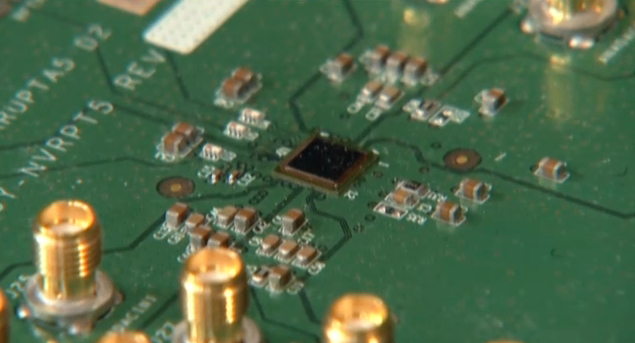At the Intel Developer Forum in San Francisco, Intel Chief Technology Officer Justin Rattner unveiled a pair of technologies coming out of Intel Labs that will overcome many of the size and power limits that have stood in the way of integrating radio technology more tightly with computers and other digital devices. The first, what Intel calls the "Moore's Law Radio," is a complete WiFi transceiver on a 32-nanometer scale silicon chip; the second, called Rosepoint, is a complete system-on-a-chip that integrates two Atom processor cores with a digital WiFi transceiver.

The problem has been that while radios have become increasingly digital, many critical components integrated—particularly around radio frequency generation—have remained analog. "Digital has surpassed analog in most areas—just about any area except radio," Rattner said in his keynote. While the back-end elements of wireless have been digitized long ago, the front end—phase modulation, frequency synthesis, and RF power amplification, for example—have largely been dependent on analog components.
The problem posed by those analog components is that while digital components can be scaled down with improvements in silicon die manufacturing, the analog parts can't—as they get smaller, they get worse, Ratter said. Yorgos Palaskas, the research leader in Intel's radio integration lab, said that because analog components generally performed much better when manufactured on a larger scale, the analog components for WiFi transceivers and cell phones "are typically made on a separate fab."
To overcome those limitations meant converting almost all of the analog aspects of radio to a digital format by creating a specialized processor to handle frequency filtering and modulation tasks. "We had to rethink radio operations from a digital perspective, and approached it as a computational problem," Palaskas said. "It wasn't just converting analog components to a digital equivalent. In some cases we had to invent new things and rethink fundamentals."
Some of the components already existed in a digital form, but needed to be significantly improved. Intel had digital phase modulators already that were developed for satellite and mobile communications, but they only handled enough frequency channels for 3G communications. "We needed much wider channels for WiFi, up to 40 MHz of bandwidth," Palaskas said. "It required some very creative mathematical manipulation."

The "Moore's law radio" is, Intel claims, the first complete WiFi digital radio fabricated with 32 nanometer technology. In an on-stage demo, Palaskas used two test radios built with the radio-on-a-chip and field-programmable gate arrays to stream digital video from one computer to another.
Palaskas said that scaling down from the previous 90 nanometer size to 32 nanometer also improved performance, more than halving the power consumption of some of the components. He said he expected that the performance of the system would only "keep getting better and better" as it is scaled down further. A few of the components remain analog—"there will always be a few that have to be," Palaskas said—but Intel researchers continue to look into ways to convert more of them to digital.
Intel is converting the radio into a product now; the Rosepoint system-on-a-chip remains in research, but its technology could soon find its way onto handheld devices. The most obvious first candidates for technology like Rosepoint are handhelds, tablets, and even cell phones, such as the Android "Jelly Bean" phones based on the Medfield Atom processor, which are expected to hit the market next year. But the technology could easily spread upward into other parts of Intel's product line, and find its way into ultrabooks and other notebook PCs, giving these devices even more efficient WiFI connectivity and longer battery life. The radio technology on its own could have much larger applications—making wireless access points much cheaper and more energy efficient could make deploying outdoor mesh networks powered by solar, battery, or Power over Ethernet much more practical.
reader comments
79